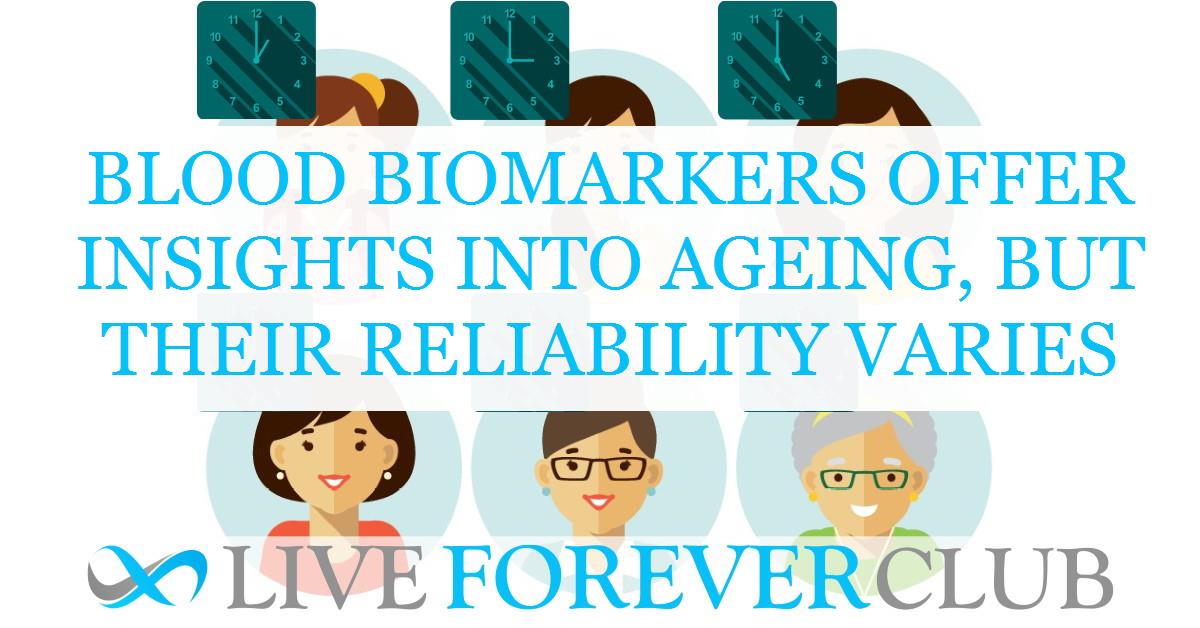Ageing is one of life’s inevitable processes, affecting all living beings. But have you ever wondered how scientists study ageing? Blood, a critical part of the body, provides invaluable insights into how our bodies change over time. Scientists have used animal models—especially mice—to understand how ageing affects humans, but are these findings truly applicable to people? A recent study sheds light on this by exploring three primary blood biomarkers: myeloid bias, telomere length, and epigenetic clocks.
Importance of blood biomarkers in ageing
Blood is often referred to as the “mirror of health,” and for good reason. The components of our blood—white blood cells, red blood cells, platelets, and plasma—change as we age. Tracking these changes allows researchers to study ageing at a cellular level.
Three biomarkers have emerged as particularly important in the study of ageing:
- Myeloid Bias: Refers to the shift in the balance of blood cells as we age.
- Telomere Length: A measurement of the protective caps on our chromosomes.
- Epigenetic Clocks: Measures changes in DNA methylation that correlate with chronological and biological ageing.
These biomarkers can help researchers understand both the pace and the health of the ageing process. Studying these biomarkers in mice has been incredibly useful because mice age faster than humans, allowing researchers to study ageing in a much shorter timeframe.
But how reliable are these findings in humans? This is the big question researchers are currently addressing.
Mice vs. Humans
Mice have long been used in scientific studies as they share about 99% of their genes with humans. Their short lifespan, approximately two years, makes them an ideal subject for studying ageing. Researchers can quickly test interventions or observe natural ageing processes in mice and then hypothesize about their potential effects on humans.
However, the comparison between mouse and human ageing is far from perfect. While many genetic and physiological processes are shared, differences in lifespan, immune system function, and environmental exposure mean that not all findings in mice directly translate to humans. Understanding these limitations is key to ensuring that the biomarkers observed in mice are relevant to humans.
The study on ageing biomarkers focuses on three areas where mouse models excel—and where they fall short.
Myeloid bias – A tale of two species
One of the most notable markers of ageing in mice is myeloid bias—the shift from lymphoid (adaptive immune cells) to myeloid (innate immune cells) dominance. In ageing mice, this shift is pronounced and correlates with a decline in immune function, leading to increased vulnerability to infections and inflammation. The myeloid bias is observed in mice as early as a few months into their life and becomes more pronounced with age.
In mice, Myeloid cells, such as monocytes and granulocytes, increase significantly with age.
Lymphoid cells, including T cells and B cells, decrease in number, leading to an imbalance.
This shift compromises the body’s adaptive immune response, making the mouse more susceptible to infections.
However, this isn’t as apparent in humans. Human blood does show changes with age, but the pronounced myeloid bias seen in mice isn’t mirrored in human ageing.
The key differences are:
In humans, there’s a general decline in both myeloid and lymphoid cells with age, though lymphoid cells tend to decline more dramatically.
The myeloid bias observed in humans primarily occurs early in life, with more stable ratios in adulthood.
So, what does this mean for researchers? It suggests that while myeloid bias is an excellent indicator of ageing in mice, it may not be as useful for understanding human ageing. This highlights one of the limitations of translating animal model research into human biology. To make the most of what we’ve learned from mice, scientists may need to focus on other markers of immune ageing in humans.
Telomere length
Telomeres, the protective caps on the ends of chromosomes, are a well-known marker of ageing. Each time a cell divides, its telomeres get slightly shorter, and eventually, when they become too short, the cell stops dividing—a process known as cellular senescence. This makes telomere length an excellent marker for biological ageing in humans.
In humans, telomeres shorten steadily throughout life, with a particularly rapid decline in childhood.
Short telomeres have been linked to a higher risk of diseases such as cancer, cardiovascular disease, and diabetes, as well as increased mortality.
Telomere length can be influenced by lifestyle factors like stress, diet, and exercise, making it a dynamic biomarker.
In contrast, mice have much longer telomeres, ranging from 30 to 150 kilobases, compared to humans’ 5 to 15 kilobases. This difference poses a problem for researchers. Despite having longer telomeres, mice age much faster than humans, with their telomeres shortening at a rate that is far faster than ours.
Some key points of difference include:
Telomere dynamics: Mice experience rapid telomere shortening, which makes telomere length a less reliable marker of ageing in mice.
Telomerase activity: Mice have higher telomerase activity, an enzyme that rebuilds telomeres, allowing them to maintain longer telomeres even as they age.
While telomere length is a robust biomarker in humans, its utility in mice is limited. This discrepancy calls into question the reliability of telomere-based ageing studies conducted in mice when applied to humans.
Epigenetic clocks
Epigenetic clocks have become one of the most exciting areas of research in ageing. These clocks rely on DNA methylation patterns, where methyl groups are added to specific spots on the DNA molecule. As we age, certain areas of our genome undergo predictable changes in methylation. By measuring these changes, researchers can estimate a person’s biological age, which may differ from their chronological age.
In both mice and humans, epigenetic clocks have been shown to correlate strongly with age. What’s even more fascinating is that:
Homologous regions in the genomes of both species undergo similar methylation changes with age.
These clocks are not only useful for estimating age but also for assessing the impacts of environmental factors, genetics, and disease on the ageing process.
However, the epigenetic clocks in mice tick much faster, in line with their shorter lifespan. The utility of these clocks is evident in their precision:
In mice: Epigenetic clocks provide highly accurate predictions of age, even across different mouse strains.
In humans: Epigenetic clocks can predict not only chronological age but also biological age, helping to identify individuals at higher risk of age-related diseases.
The conservation of age-related methylation sites across species suggests that epigenetic clocks could be a key marker for studying ageing in both mice and humans. Unlike myeloid bias and telomere length, the precision and cross-species relevance of epigenetic clocks make them one of the most promising biomarkers for translational research in ageing.
Translating Findings from Mice to Humans
While murine models have provided tremendous insights into the biology of ageing, this review clearly shows that not all biomarkers are equally transferable between species. The myeloid bias observed in mice doesn’t map cleanly onto human ageing, and telomere length as a biomarker is unreliable due to species-specific dynamics. On the other hand, epigenetic clocks seem to offer a promising route for understanding ageing in both species.
So, what’s the future of ageing research? As researchers continue to explore the ageing process, it’s crucial to:
Focus on biomarkers that are consistent across species, like epigenetic clocks.
Recognize the limitations of mouse models and ensure that findings are validated in human studies.
Develop new models that better capture human ageing, possibly using organoids or other advanced biological systems.
By doing so, the insights gained from murine models can be applied more effectively to human health, offering the possibility of developing interventions that slow the ageing process and improve quality of life in our later years.
Future of ageing research
Ageing is complex, and while mice have been invaluable in ageing research, this study highlights the importance of using the right biomarkers when translating findings to humans. Myeloid bias, telomere length, and epigenetic clocks each offer unique insights, but only epigenetic clocks seem to hold true across species.
For researchers, the challenge is to continue exploring the connections between animal models and human ageing while recognizing the limitations of each system. The future of ageing research will likely involve a combination of animal models, human studies, and advanced technologies like epigenetic profiling.
As we learn more about these biomarkers, we move closer to answering one of humanity’s oldest questions: can we truly slow down or even reverse ageing? While we may not have the full answer yet, the foundation is being built with each new discovery.
The study is published in the journal Experimental Hematology. It was led by Wolfgang Wagner from RWTH Aachen University Medical School.






